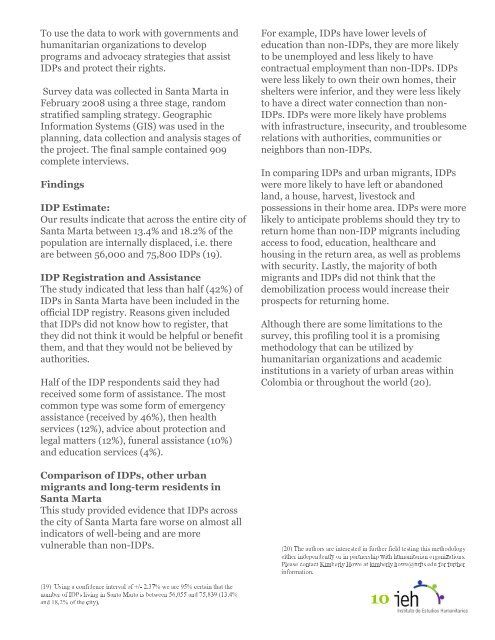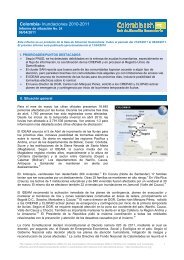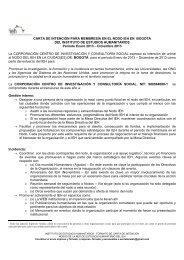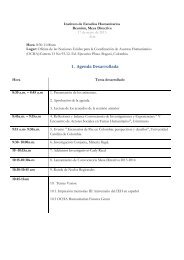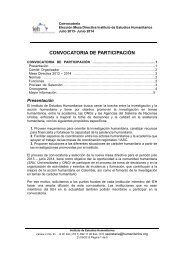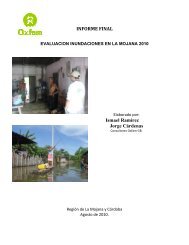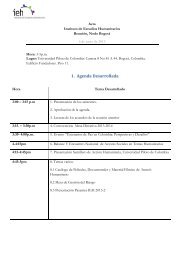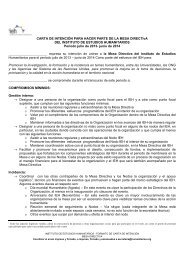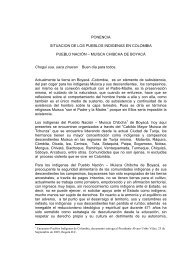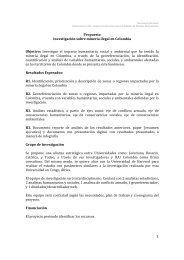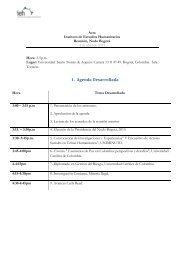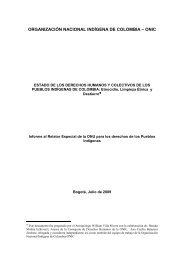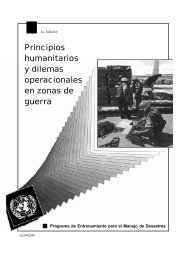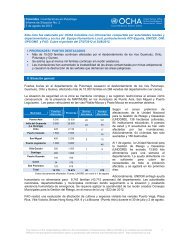Mapas y Gráficos de Desplazamiento primer semestre de 2008 2 ...
Mapas y Gráficos de Desplazamiento primer semestre de 2008 2 ...
Mapas y Gráficos de Desplazamiento primer semestre de 2008 2 ...
Create successful ePaper yourself
Turn your PDF publications into a flip-book with our unique Google optimized e-Paper software.
To use the data to work with governments andhumanitarian organizations to <strong>de</strong>velopprograms and advocacy strategies that assistIDPs and protect their rights.Survey data was collected in Santa Marta inFebruary <strong>2008</strong> using a three stage, randomstratified sampling strategy. GeographicInformation Systems (GIS) was used in theplanning, data collection and analysis stages ofthe project. The final sample contained 909complete interviews.FindingsIDP Estimate:Our results indicate that across the entire city ofSanta Marta between 13.4% and 18.2% of thepopulation are internally displaced, i.e. thereare between 56,000 and 75,800 IDPs (19).IDP Registration and AssistanceThe study indicated that less than half (42%) ofIDPs in Santa Marta have been inclu<strong>de</strong>d in theofficial IDP registry. Reasons given inclu<strong>de</strong>dthat IDPs did not know how to register, thatthey did not think it would be helpful or benefitthem, and that they would not be believed byauthorities.Half of the IDP respon<strong>de</strong>nts said they hadreceived some form of assistance. The mostcommon type was some form of emergencyassistance (received by 46%), then healthservices (12%), advice about protection andlegal matters (12%), funeral assistance (10%)and education services (4%).For example, IDPs have lower levels ofeducation than non-IDPs, they are more likelyto be unemployed and less likely to havecontractual employment than non-IDPs. IDPswere less likely to own their own homes, theirshelters were inferior, and they were less likelyto have a direct water connection than non-IDPs. IDPs were more likely have problemswith infrastructure, insecurity, and troublesomerelations with authorities, communities orneighbors than non-IDPs.In comparing IDPs and urban migrants, IDPswere more likely to have left or abandonedland, a house, harvest, livestock andpossessions in their home area. IDPs were morelikely to anticipate problems should they try toreturn home than non-IDP migrants includingaccess to food, education, healthcare andhousing in the return area, as well as problemswith security. Lastly, the majority of bothmigrants and IDPs did not think that the<strong>de</strong>mobilization process would increase theirprospects for returning home.Although there are some limitations to thesurvey, this profiling tool it is a promisingmethodology that can be utilized byhumanitarian organizations and aca<strong>de</strong>micinstitutions in a variety of urban areas withinColombia or throughout the world (20).Comparison of IDPs, other urbanmigrants and long-term resi<strong>de</strong>nts inSanta MartaThis study provi<strong>de</strong>d evi<strong>de</strong>nce that IDPs acrossthe city of Santa Marta fare worse on almost allindicators of well-being and are morevulnerable than non-IDPs.10


